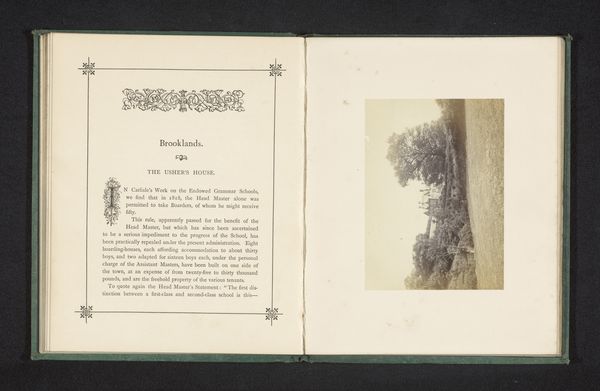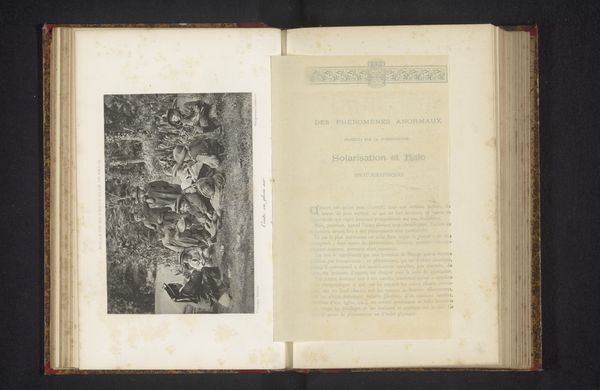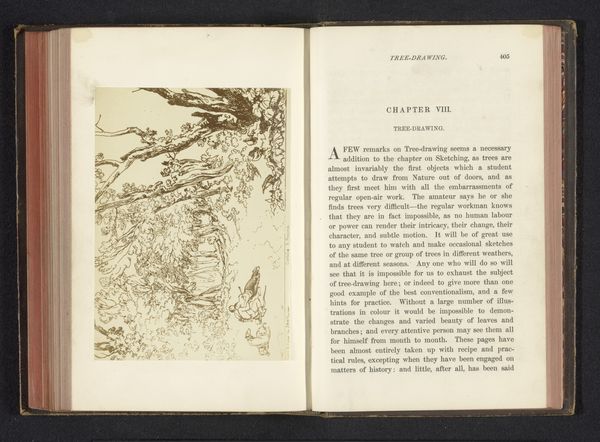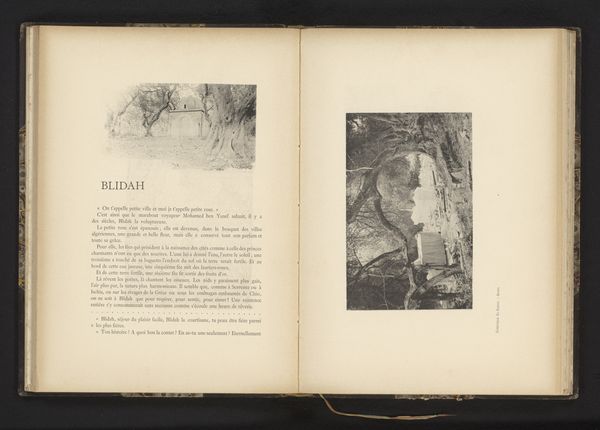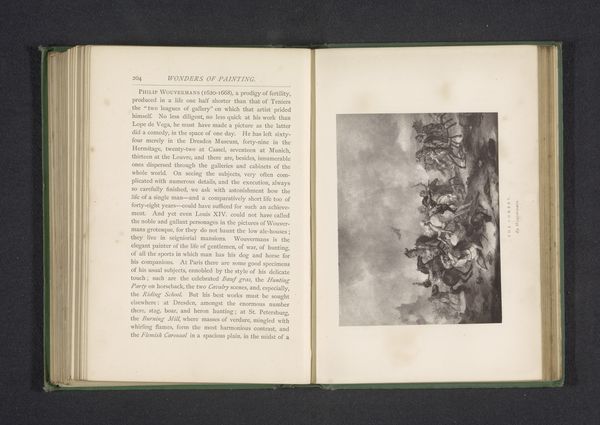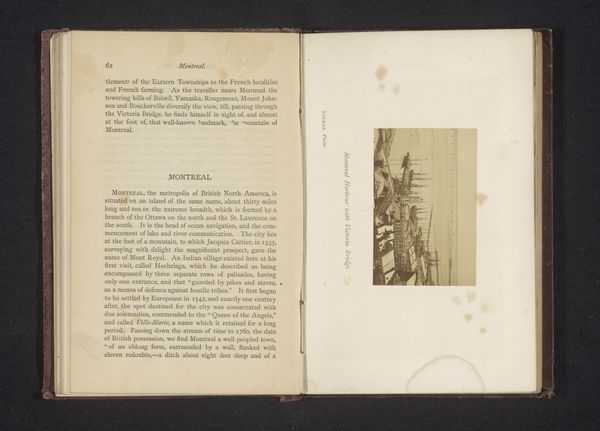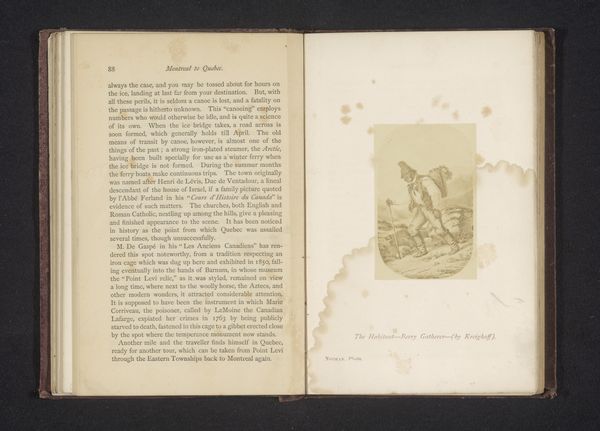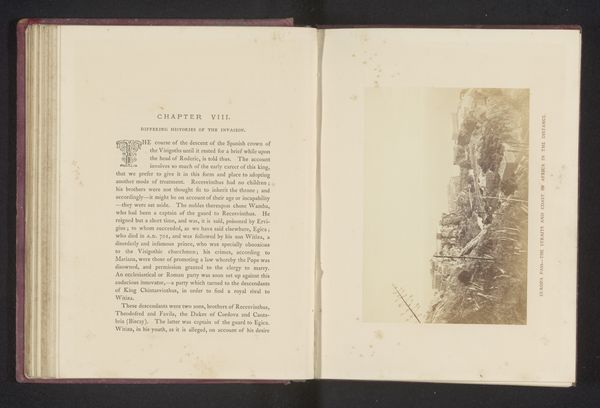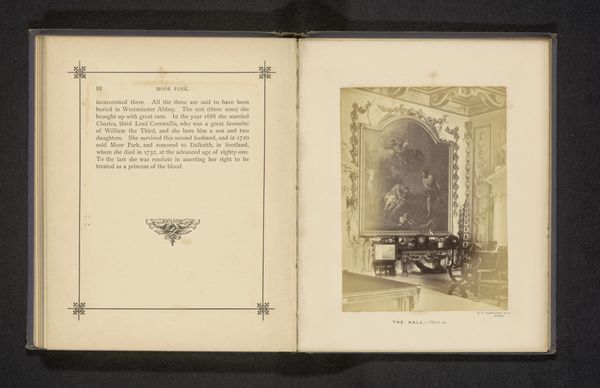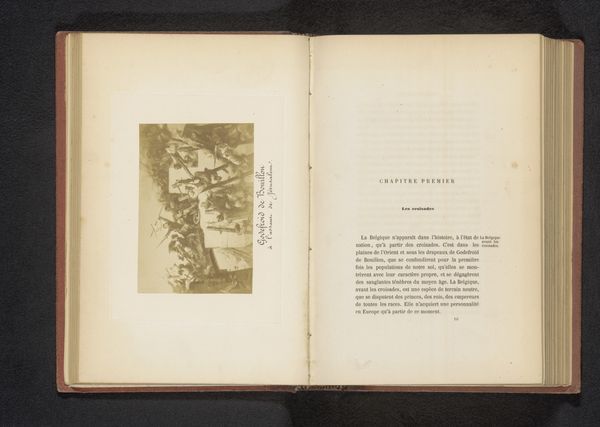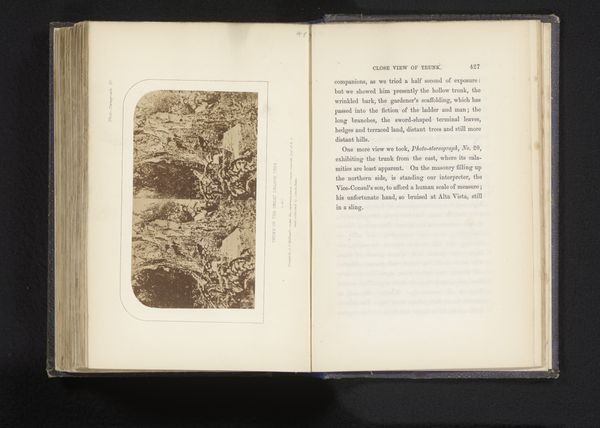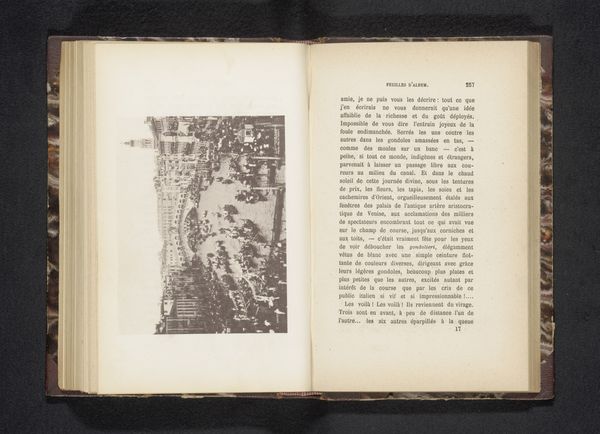
print, photography
# print
#
landscape
#
photography
Dimensions: height 103 mm, width 138 mm
Copyright: Rijks Museum: Open Domain
Editor: So, this photograph is entitled “Gezicht op een huis met tuin in Moor Park in Rickmansworth," and it was created before 1871 by H.V. Lemenager. It's interesting because it's not just the image itself, but the photograph is displayed in an opened book next to a written passage, perhaps giving some historical context about the scene. The image has a hazy, romantic feel; it reminds me of early documentary photography. What are your first thoughts looking at it? Curator: This image speaks volumes about the social function of art and how taste is cultivated. The combination of image and text hints at a very specific, likely wealthy, audience. Landscape prints and photographs like this were not merely aesthetic objects, but also status symbols. Editor: How so? Curator: Consider the context of viewing. This image is part of a bound volume. Owning such a volume suggested a level of leisure and education. The “picturesque” style of the image itself—soft focus, idyllic scenery—was fashionable amongst certain social classes. Do you think a mass audience was the initial consumer for such artwork? Editor: Probably not, it was most likely distributed among the elite. It’s like a coffee-table book of its time. Now that you point it out, even the printing quality and book-binding scream wealth. So, it reflects a desire to visually consume and document landscapes connected to specific aristocratic narratives. The landscape is almost secondary to the statement of refined taste. Curator: Precisely. The landscape and the narrative create this illusion of cultural capital. We learn as much, or more, about the intended owner and viewer of the object. Editor: Thanks for broadening my perspective. It's fascinating how much information is embedded within the object itself and its production and the context within which it would have been viewed. Curator: It’s been a worthwhile dialogue. The real reward is to find connections that are in front of us all along.
Comments
No comments
Be the first to comment and join the conversation on the ultimate creative platform.

